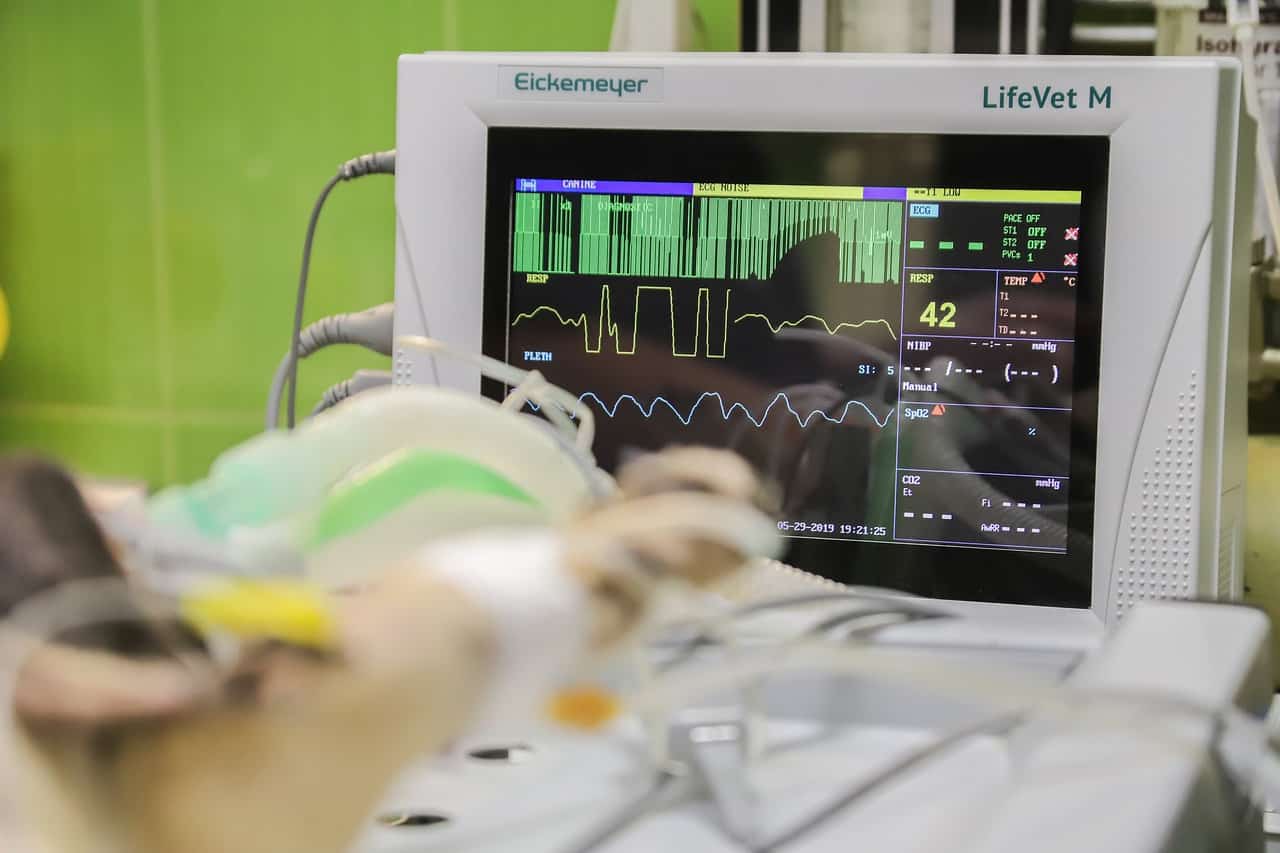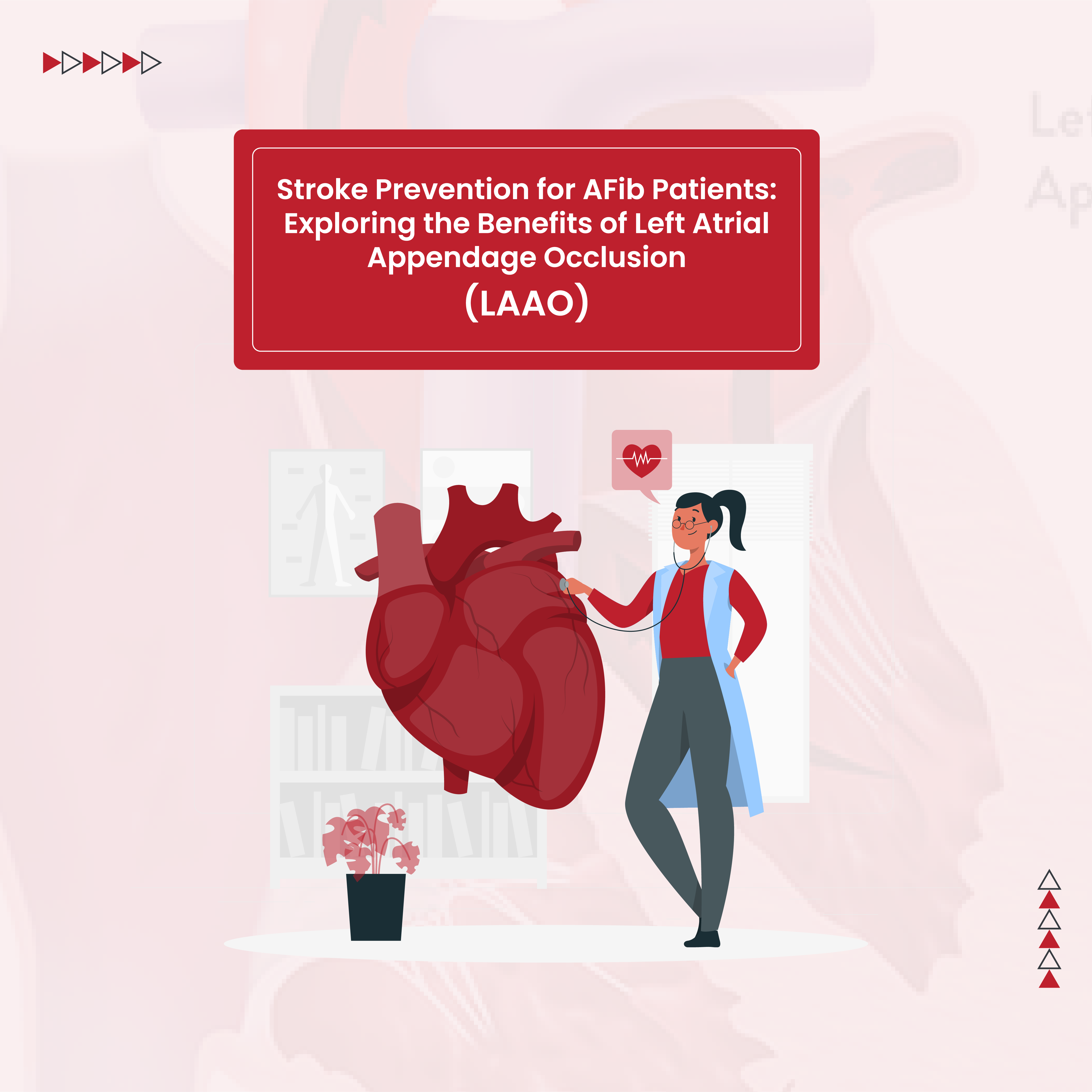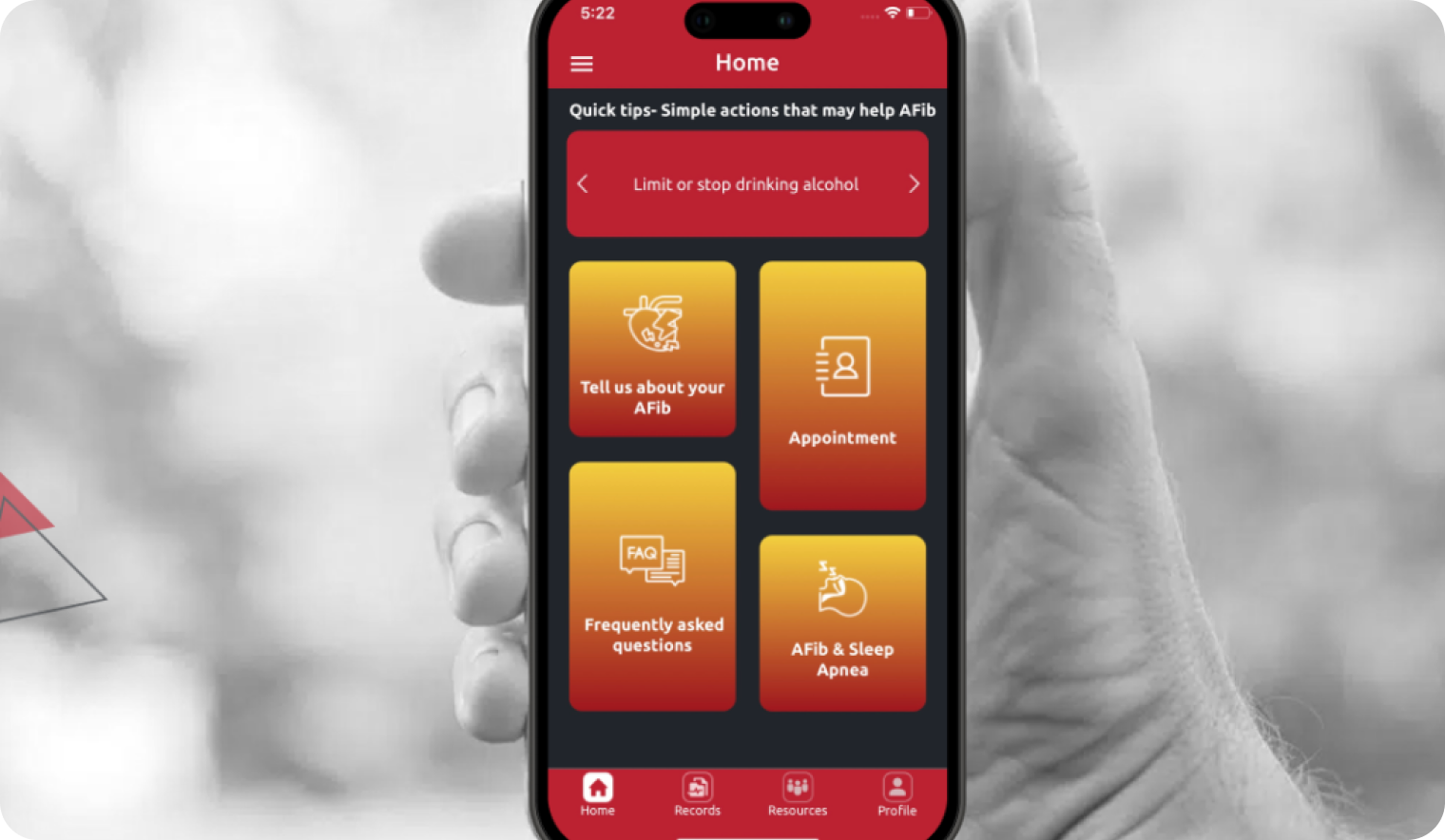Atrial fibrillation (AFib or AF) is the most common abnormal heart rhythm (arrhythmia) which requires treatment. It places a significant burden on patients and our healthcare system at large, costing an estimated $28 billion per year. Atrial fibrillation and atrial flutter, which is a closely related arrhythmia, are estimated to affect 44 million people worldwide. The incidence of atrial fibrillation and atrial flutter are expected to continue to increase with our aging population and improved survival with chronic health conditions.
Electrophysiology is a subspecialty of cardiology that focuses on the management and treatment of heart rhythm abnormalities like atrial fibrillation and atrial flutter. People with atrial fibrillation have an increased risk of stroke, heart failure, hospitalization, and death. Research is ongoing on the optimization of currently available treatments and discovery of novel treatment options for AFib.
What is Atrial Fibrillation?
AFib is caused by chaotic, rapid electrical impulses that originate in the upper heart chambers (atria) with over 90% of atrial fibrillation triggers arising from the pulmonary veins where they attach to the left atrium. AFib causes the atria to beat faster than the lower heart chambers (ventricles) and results in an irregular heartbeat. Atrial fibrillation makes the heart less effective at pumping blood causing blood to pool in the heart which can lead to blood clots. If these blood clots leave the heart they can be carried to the brain to cause a stroke. People with AFib have a 5 times increased risk of stroke.
What Causes Atrial Fibrillation?
Structural changes within the heart can cause atrial fibrillation. Health conditions that can damage the heart’s structure AFib include:
- High blood pressure
- Coronary artery disease and myocardial infarction (heart attack)
- Sleep apnea
- Heart valve disease
- Heart failure
- Hyperthyroidism (thyroid produces too much thyroid hormone)
- Lung disease
- Pulmonary embolism (blood clots in the lungs)
- Heart surgery
- Serious illness and pneumonia
- Alcohol
- Congenital heart disease (structural abnormality you are born with)
Additional risk factors for atrial fibrillation are:
- Advancing age
- Diabetes
- Obesity
- Male gender
- Smoking
- Excessive alcohol
What is Electrophysiology?
Cardiac electrophysiology is the study and management of heart rhythm abnormalities. Because atrial fibrillation is the most common arrhythmia, it is an area of particular interest and expertise for electrophysiologists. Atrial fibrillation is an area of intense clinical research. New research findings and developments in the area of AFib include:
Dementia. People with atrial fibrillation have a significantly increased risk of stroke which is a common cause of dementia. However, there may also be correlation between AFib and dementia even in people who have not had a stroke. This may be due to common risk factors for both health conditions such as advancing age, congestive heart failure, diabetes, high blood pressure, and vascular disease. In addition, atrial fibrillation can cause clots that are so small that when they travel to the brain they cause microdamage that does not result in symptoms. However, repeated microdamage can have a cumulative effect and contribute to dementia.
If you have atrial fibrillation and have risk factors for stroke, anticoagulation (blood thinner) is commonly used to decrease stroke risk. Warfarin and direct oral anticoagulants (DOACs) are common types of anticoagulants that have been shown to reduce stroke risk.
A study published in April 2022, in the Journal of the American Heart Association assessed the occurrence of dementia amongst patients with AFib who were treated with warfarin or DOACs. The study found that DOACs reduced the risk of dementia by 50% compared to warfarin.
A separate area of research on dementia and AFib has focused on the question of if the type of rhythm control affects dementia. A study presented at the Heart Rhythm Society meeting in May 2022 reported that patients with AFib who were treated with catheter ablation had a 41% lower incidence of dementia compared to those who were treated with antiarrhythmic drugs. This was only an observational study so no firm conclusions can be drawn based on this study alone but it is a promising avenue for future research.
Rhythm vs. Rate Control. In 2020, the European Society of Cardiology atrial fibrillation guidelines summarized atrial fibrillation treatment using an “ABC” scheme. These are “A” for anticoagulation/avoid stroke, “B” for better symptom control through rate and or rhythm management, and “C” Treat concomitant heart conditions. “C” encompases atrial fibrillation risk factor management/modification. Numerous studies have found that treating or eliminating atrial fibrillation risk factors like high blood pressure, diabetes, obesity, smoking, and excessive alcohol intake has significant positive effects on atrial fibrillation treatment efficacy and, in some cases, can slow disease progression.
Rapid heart rates are commonly seen in atrial fibrillation. The elevated heart rate is thought to cause many of AFib’s symptoms and can lead to tachycardia-induced cardiomyopathy (i.e. heart failure that results from the heart rate being too fast). Current atrial fibrillation guidelines in the United States and Europe, endorse rate control as the initial treatment goal with recommendations for rhythm control if AFib symptoms are not adequately managed with rate control or if there are other predisposing factors that favor rhythm control such as:
- Age less than 65
- Tachycardia–induced cardiomyopathy
- Disabling atrial fibrillation symptoms
- Elevated stroke risk
- Difficulty obtaining adequate rate control
- Pregnancy
- Structurally normal, or near–normal, heart
- Few or no AFib risk factors
- Heart failure
- Patient preference
- Recurrent symptomatic paroxysmal atrial fibrillation
However, improvements in rhythm control therapies have increasingly pushed the recommendations toward earlier intervention aimed at maintaining normal sinus rhythm. Rhythm control can be achieved using antiarrhythmic drugs, cardiac ablation or a combination of these modalities.
As we move forward with atrial fibrillation management, we predict that increasing emphasis will be put on rhythm control. A state-of-the-art review released in May 2022, in the Journal of the American College of Cardiology, concluded that the evidence increasingly supports early rhythm control in patients with atrial fibrillation. Emphasis is put on the importance of rhythm control early in the disease process before a person develops persistent atrial fibrillation. Early rhythm control, while AFib is still paroxysmal, has the potential to halt disease progression and prevent atrial fibrillation related deaths, heart failure and strokes. By slowing or stopping AFib’s disease progression, early rhythm control may be able to save patients from years of symptomatic atrial fibrillation and the authors of the review propose that it should, therefore, be offered more widely.
The question of which method of rhythm control (i.e. ablation vs. medications) is superior to the other is an area of continued research. A number of recent studies have found that catheter ablation is more effective than drug therapy at:
- Preventing atrial fibrillation recurrence
- Reducing stroke
- Reducing cardiovascular hospitalizations and death
- Improving quality of life
- Improvements in heart function (ejection fraction) for patients with heart failure
Although these studies report a benefit of catheter ablation over antiarrhythmic drugs, ablation is not available in all areas and may not be appropriate for all people. In these cases, rhythm control with antiarrhythmic medications is an excellent option.
New Catheter Ablation Technology. Catheter ablation using heat (radiofrequency) or freezing (cryoablation) have been the primary energy delivery methods used in atrial fibrillation or atrial flutter ablation. The purpose of radiofrequency or cryoablation is to create scar tissue that blocks the chaotic electrical impulses that cause AFib. Methods for improving the safety and efficacy of catheter ablation are continually being explored.
A new catheter ablation technology to watch is called pulsed field ablation. Pulsed field ablation interrupts the electrical pathways in atrial tissue that cause atrial fibrillation by a different but apparently very effective mechanism than radiofrequency or cryoablation. The first in-human clinical study using pulsed field ablation technology was published in January 2022. It demonstrated 100% success in pulmonary vein isolation with no adverse events related to the pulsed field ablation delivery system. This was a small study involving only 38 patient’s and was primarily focused on establishing the safety of pulsed field ablation. Future studies will assess efficacy and longer-term patient outcomes.
Atrial Tissue Staging. It becomes increasingly difficult to maintain normal sinus rhythm as AFib progresses from paroxysmal atrial fibrillation to persistent atrial fibrillation. This is because of structural and functional changes within the left atrium that occur in the setting of AFib and which help maintain AFib.
As AFib advances, the left atrium tends to enlarge and the atrial tissue stiffens (fibrosis). An area of ongoing research is the use of specialized left atrial imaging (echocardiogram and cardiac MRI) to assess the size, function, and degree of fibrosis within the left atrium. This information can then be used to guide treatment decisions.
For example, left atrial fibrosis is assessed using cardiac MRI and is graded from stage 1 to 4 with stage 1 being less than 10% left atrial fibrosis and stage 4 being greater than 30% left atrial fibrosis. Left atrial staging can help determine if you are a good candidate for catheter ablation because the recurrence of AFib after catheter ablation occurs more frequently in patients with stage 3 or 4 left atrial fibrosis than those with less than 20% left atrial fibrosis (stages 1 or 2). Catheter ablation success has been shown to decrease by 6% for every 1% increase in atrial fibrosis.
New knowledge about dementia in AFib, rhythm vs. rate control, new ablation technology, and use of advanced cardiac imaging are just a few of the exciting advances in atrial fibrillation research that are shaping the future of electrophysiology and atrial fibrillation management.








